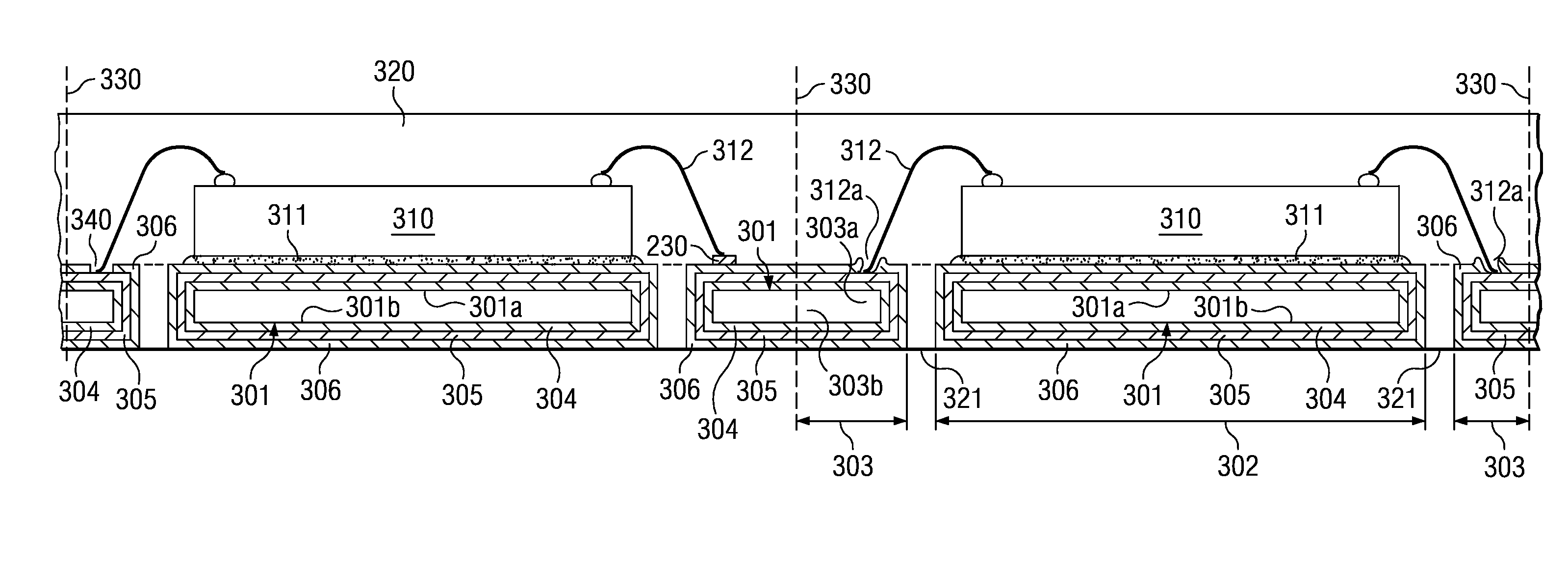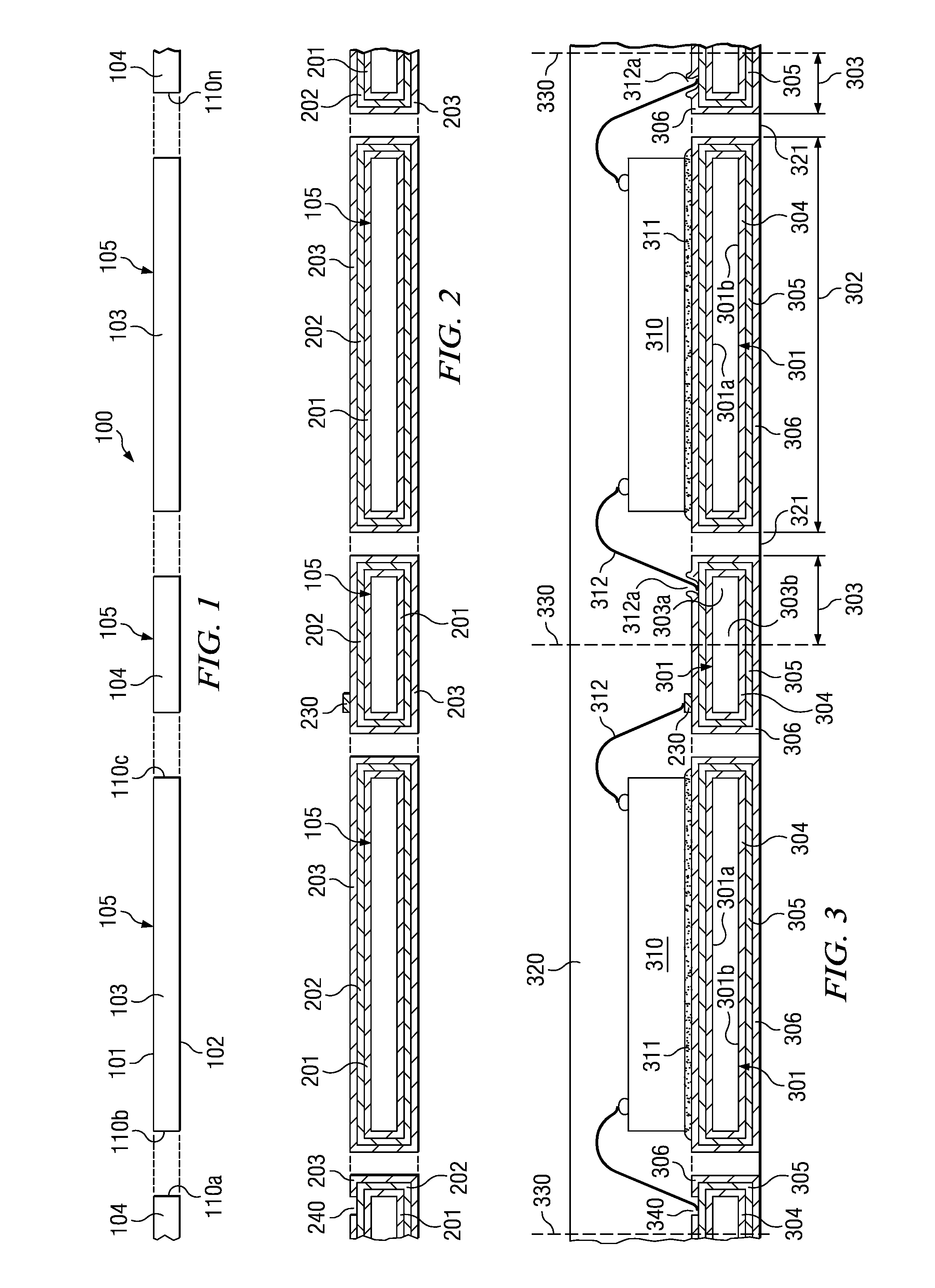Low cost lead-free preplated leadframe having improved adhesion and solderability
a leadframe and low cost technology, applied in semiconductor devices, semiconductor/solid-state device details, thin material processing, etc., can solve the problems of difficult to maintain mold compound adhesion to leadframes, known leadframes do not offer metallization for good adhesion, etc., to achieve easy manufacturing, enhance down-bonding capability, and improve moisture-level quality
- Summary
- Abstract
- Description
- Claims
- Application Information
AI Technical Summary
Benefits of technology
Problems solved by technology
Method used
Image
Examples
Embodiment Construction
[0020]FIG. 1 is a schematic and simplified cross section of a leadframe portion, generally designated 100. The leadframe has a plurality of surfaces: the first surface 101, the second surface 102, and numerous side edge surfaces 110a, 110b . . . 110n. While the surfaces 101 and 102 originate from the sheet of starting material, the side edge surfaces 110a to 110n have been created by the forming process of the leadframe structure. The leadframe portion depicted contains a plurality of chip mount pads 103 and a plurality of lead segments 104. The leadframe is made of a base metal 105.
[0021]As defined herein, the starting material of the leadframe is called the “base metal”, indicating the type of metal. Consequently, the term “base metal” is not to be construed in an electrochemical sense (as in opposition to ‘noble metal’) or in a structural sense.
[0022]Base metal 105 is typically copper or a copper alloy. Other choices comprise brass, aluminum, iron-nickel alloys (“Alloy 42”), and ...
PUM
| Property | Measurement | Unit |
|---|---|---|
| thick | aaaaa | aaaaa |
| thick | aaaaa | aaaaa |
| temperature | aaaaa | aaaaa |
Abstract
Description
Claims
Application Information
 Login to View More
Login to View More - R&D
- Intellectual Property
- Life Sciences
- Materials
- Tech Scout
- Unparalleled Data Quality
- Higher Quality Content
- 60% Fewer Hallucinations
Browse by: Latest US Patents, China's latest patents, Technical Efficacy Thesaurus, Application Domain, Technology Topic, Popular Technical Reports.
© 2025 PatSnap. All rights reserved.Legal|Privacy policy|Modern Slavery Act Transparency Statement|Sitemap|About US| Contact US: help@patsnap.com


